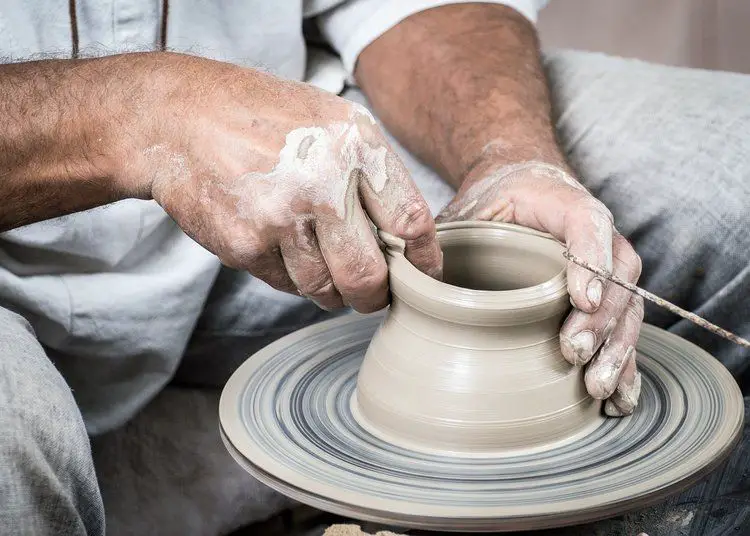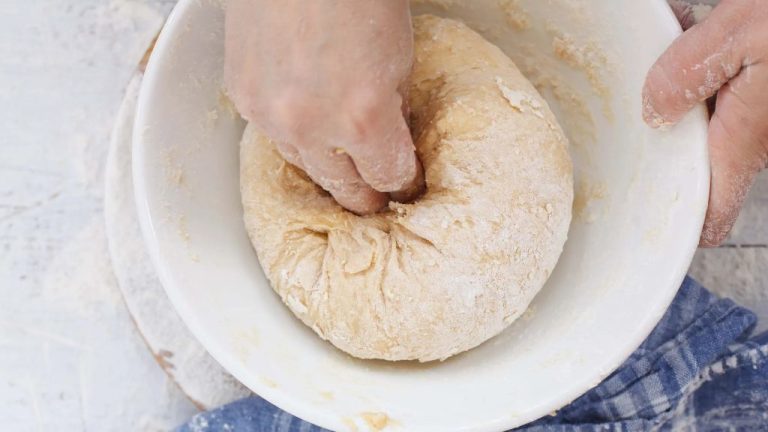What Can I Use As An Armature For Air Dry Clay?
An armature is an internal framework or support structure used when sculpting with clay. It provides stability and structure so the clay maintains its shape while being worked. Armatures are commonly used with air-dry clay and polymer clay, which may be prone to cracking or sagging when sculpted without an internal support structure.
Armatures can be made from many different materials, but the most popular options include:
Wire
Wire is one of the most popular armatures for air dry clay. Thin, stiff wire holds its shape well when covered in clay. Copper and aluminum wire are commonly used.
The gauge, or thickness, of the wire affects its stiffness. Thicker wire is stiffer while thinner wire is more pliable. Choose an appropriate gauge based on the part of the sculpture and how much support is needed. Thick 14-16 gauge wire can form a sturdy frame. Thinner 18-22 gauge wire bends more easily into intricate shapes.
The smooth surface of metal wire allows the clay to grip it firmly. Bend wire into the desired shape before applying clay over it. Use pliers to bend the wire cleanly into precise angles. Curved shapes can be formed by hand or around a cylinder. Wire mesh and cut pieces of wire can be used along with full lengths.
Wood
Wood can make an excellent armature material for air dry clay because of its strength, smoothness, and ability to firmly attach the clay. Pieces of wood like branches, sticks, dowels, and boards provide a rigid and sturdy structure that will not bend or warp as easily as wire. Wood surfaces are also naturally smooth, which allows the clay to grip and adhere well without getting caught on rough edges or grooves.
In addition, wood can be sealed by painting or varnishing. This creates a water-resistant barrier so the clay doesn’t leach moisture into the wood fibers and cause warping. The sealed wood surface will also prevent any stains or discoloration of the clay from natural wood tannins. When attaching air dry clay to wood, materials like liquid clay, clay slip, or wood glue create a strong bond that helps hold intricate clay detail work in place during drying and firing. With the right preparation and sealants, wood provides an ideal armature base for air dry clay projects and sculptures.
Plastic
Plastic can make a lightweight and flexible armature for air dry clay. Some common plastic materials used include:
- Plastic bottles – The smooth, curved surfaces of plastic bottles work well to create rounded sculptural forms. Plastic bottle armatures are very lightweight.
- Plastic packaging – Things like clear clamshell packaging or blister packs can be cut and shaped into armatures. The transparency allows you to see the armature inside the clay.
- Plastic utensils – Plastic cutlery, straws, or coffee stir sticks can be used to create thin, wire-like armatures.
One downside to plastic armatures is that air dry clay can sometimes have adhesion issues, especially with smooth plastics like bottles. This can cause the clay to peel or fall off the armature as it dries and shrinks. Lightly roughing up the surface of smooth plastics with sandpaper can help the clay adhere better.
Metal
Metal can be an excellent armature material for air dry clay because of its sturdiness and ability to provide structure. Some common metal options are wire, mesh, rods, and sheets. Sturdy metal armatures allow you to create more elaborate and sizable sculptures that maintain their form as you build up the clay.
Metal’s conductivity does require some caution when using air dry clay, which dries through evaporation. Direct contact between the clay and metal can cause drying to occur too rapidly, potentially leading to cracking. This can be mitigated by coating the metal in paint or glue prior to adding the clay. Allowing the clay to dry slightly before adding it to a metal armature helps too.
Weight is another consideration, as metal skews on the heavier side. For large sculptures or those needing more support, metal’s heft can be beneficial. But for smaller, delicate pieces it may outweigh the clay structure. Opt for lighter gauges or metals like aluminum in these cases. Overall, metal can create very sturdy armatures for air dry clay, with some adjustments to prevent overdrying or excess weight.
Found Objects
Everyday items found around the house can make excellent armatures for air dry clay. Things like toilet paper tubes, paper towel tubes, cardboard boxes, plastic bottles, jar lids, and more can provide the inner structure and support that clay needs. The great thing about found objects is that they are free and allow for lots of creativity.
When selecting found items to use, consider their weight, sturdiness, and shape. The armature needs to be strong enough to hold the clay without collapsing or warping. Heavier items like cardboard and thick plastic will generally provide more support than flimsy materials. Make sure to thoroughly clean any found objects before using them.
One of the big advantages of found object armatures is that they are completely customizable. You can cut, bend, glue, and attach pieces however you like to create unique forms. Let your imagination guide you, while keeping the physical properties of the materials in mind. The sky’s the limit when it comes to repurposing everyday items as armature for clay projects!
Paper
Paper is one of the most affordable and accessible options for an armature. Simply roll and crumple newspaper, paper towels, or scrap paper to create a lightweight armature. However, paper lacks durability and structural integrity for larger sculptures. The paper may bend or collapse under the weight of the clay. Work in light layers of clay and allow sufficient drying time.
For more stability, consider paper mâché techniques. You can cover balled up paper with a paste of flour and water. This creates a shell that is stronger and more moisture-resistant. Layer strips of paper soaked in paste over a wire or cardboard frame for extra reinforcement. Paper mâché takes more time but results in a lighter and cheaper alternative to wood or metal armatures.
Natural Materials
Natural materials like twigs, shells, leaves, and seed pods can make excellent armatures for air dry clay. Using found natural objects gives your sculpture an organic, earthy look. Here are some pros and cons to using natural materials:
Pros:
- Free and abundant if you collect them yourself
- Provide an irregular, asymmetrical shape
- Offer interesting textures
- Give an organic, natural aesthetic
Cons:
- Can be fragile and prone to breaking
- May be uneven or warped
- Not as structurally strong as wire or other materials
- May rot, decay or degrade over time
Look for small dried twigs, seed pods, shells, and other objects to use. Avoid using anything too green, moist or flexible. Sturdier branches and driftwood work better than delicate twigs. Shells with thicker walls are less prone to cracking under the weight of the clay. Consider spraying natural materials with sealant if concerned about rotting. Use hot glue or wire to attach pieces together into an armature shape before adding the clay.
Pros and Cons of Different Armature Materials
When selecting an armature material for air dry clay, there are several factors to consider in weighing the pros and cons of different options:
Wire
Wire offers strength and flexibility to make an internal skeleton for supporting clay. It’s inexpensive and easy to find. The thinner the gauge, the more pliable it is for shaping. The downside is that thin wire can bend when baking clay, so heavier gauges may be needed. Wire also conducts heat, so baking times may need to be monitored.
Wood
Wood provides good support for heavyweight air dry clays. It’s affordable, easy to cut and shape. However, moisture from clay can cause wood to warp or rot over time. Unsealed wood may also leak resins. Harder woods like birch offer more stability. Wood requires more prep sanding than metal armatures.
Plastic
Plastics like polyethylene tubing are lightweight and thermally stable for baking clay. They’re easy to cut and bend. However, plastic is prone to buckling with very heavy clay and lacks the strength of metal. Smooth surfaces don’t grip clay as well. Plastics can also deform or melt at baking temps above 200°F.
Metal
Metals like aluminum wire provide the most durable base for sculpting and baking clay. Aluminum is affordable, retains shape well and conducts heat evenly. Copper wire allows better detail for thin areas. The main downside is metals conduct and retain cold, making them hard to handle at first. Metals can also be rigid for delicate sculpting.
In many cases, combining wire, wood, plastic and other armatures utilizes the strengths of each material for the best results. Wire or rods provide support, while wood blocks offer extended bulk and shaping. Strategic use of varied armatures creates optimal strength and form.
Tips and Techniques
When working with an armature for air dry clay, there are some useful tips and techniques to keep in mind:
Securing Armature Firmly
Make sure the armature is secured firmly before adding clay. Use hot glue, wire, clamps or screws to hold the different components together tightly so the armature doesn’t shift or collapse under the weight of the clay.
Structural Reinforcement
Consider where the sculpture will need additional structural support. Use thicker wire, wood or other materials to reinforce the armature in areas that will hold more weight or be vulnerable to bending and breaking.
Hollow Spaces and Weight Reduction
Look for areas where hollow spaces can be created, like inside limbs or the torso area of a figure sculpture. Hollow spaces help reduce overall weight without sacrificing strength. Things like plastic bottles and cardboard tubes are great for creating hollow voids.




